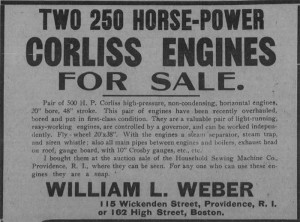Besides advertising the business for “J. P. Roberts, Druggist and Pharmacist, Dealer In Books, Stationery, Paints Oils and Dye Stuffs, Hastings, Mich.” this trade card/bookmark contains the following words of wisdom:
“Time is money” “Where there is a will there is a way” and one this web author had never heard before, “Speak the truth, no lie thrives.” (A good one!)
The Hidden Garden
Not to forget to mention the beautiful partridge, and pale gold-colored lettering and fancy design, in general. Click on the image to enlarge, then notice the seated lady in her front garden. (A bonus!) At the bottom are printed the words: “Entered According to Act of Congress by Gibson & Co. in the Year 1874 in the Office of the Librarian of Congress at Washington.”
James P. Roberts and Family
J. P. was James P. Roberts. From the 1880 Federal Census for Hastings, he was born in Pennsylvania, about 1825; wife Anna M. Roberts, born in Maine, about 1834; their daughters, Clara W., age ten, and Sarah E., age six, both born in Michigan. Anna was the daughter of David G. Robinson (who became Hastings City bank president) and Sarah B. (Keith) Robinson.
The 1860 shows James and wife Annie, and Mary F., age five, and Annie D. Roberts, age four (daughters presumably) as well as Augustus Taylor, age eleven (the 1860 census did not give relationships.)
Hastings’ First
J. P. Roberts has the distinction of opening the first drug store in Hastings, in 1851. About 1860 he took on Daniel Striker as partner in the drugstore/book seller business, and their partnership lasted about six years. Striker would become well-known in Hastings history, he served as County Clerk and was twice-elected Secretary of State, among other achievements.
Trade Card, Bookmark. J. P. Roberts Druggist and Pharmacist, Hastings, Michigan. Circa 1874.
Price: $15.00 Size: 4 and 1/2 x 1 and 5/8″
Sources: Year: 1880; Census Place: Hastings, Barry, Michigan; Roll: 570; Family History Film: 1254570; Page: 113C; Enumeration District: 040; Image: 0607. (Ancestry.com)
Year: 1860; Census Place: Hastings, Barry, Michigan; Roll: M653_536; Page: 747; Image: 245; Family History Library Film: 803536. (Ancestry.com)
Michigan Historical Collections, Vol. 29. Michigan Pioneer and Historical Society. pp. 416 – 418. (Google eBook).
Walton, Esther. A Look Back: A review of the businesses, organizations and history – of Hastings, Michigan. (Google snippet view).
Michigan Historical Collections, Vol. 28. Michigan Pioneer and Historical Society. p. 378. (Google eBook).
























